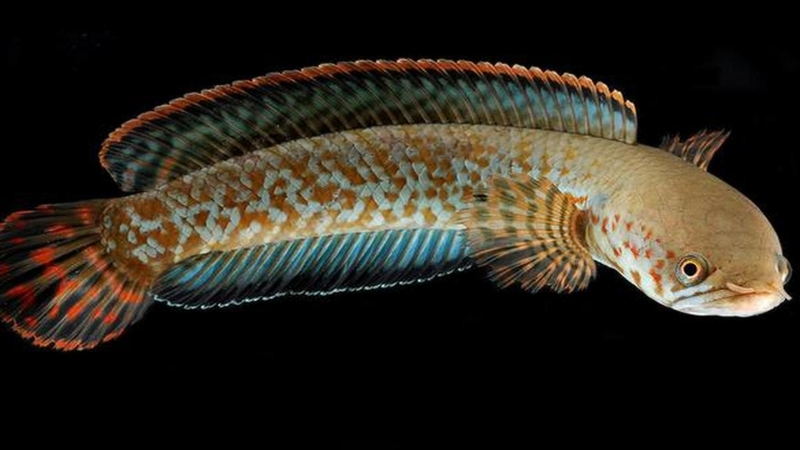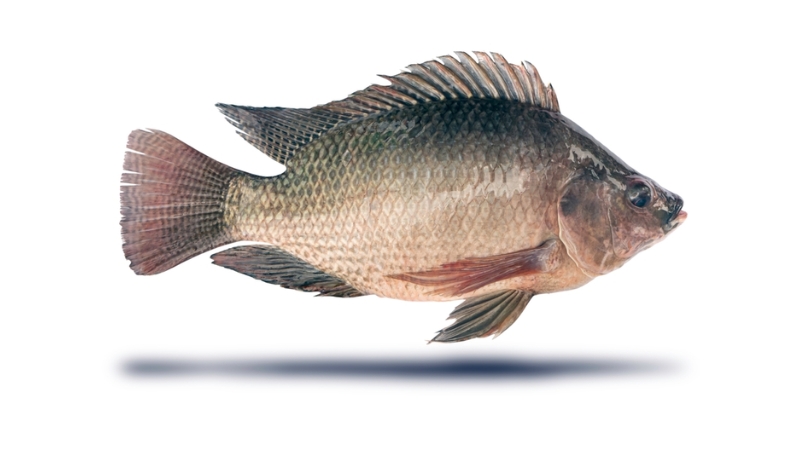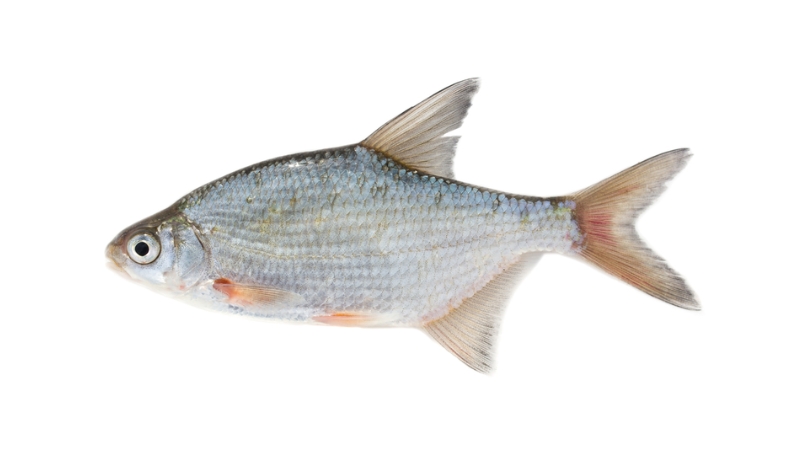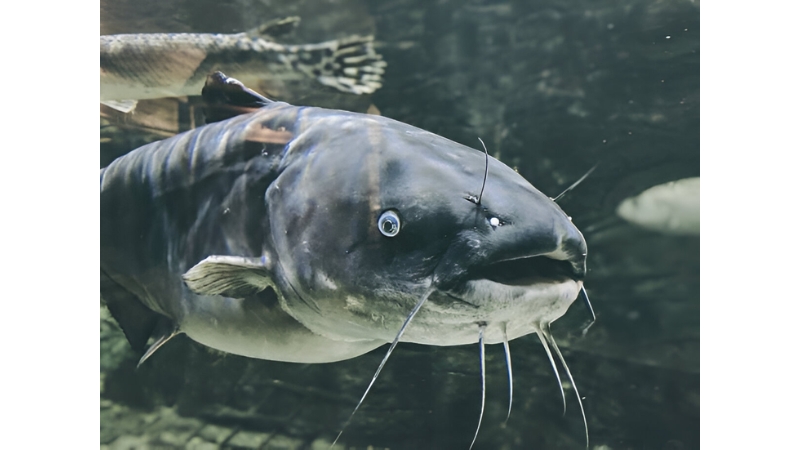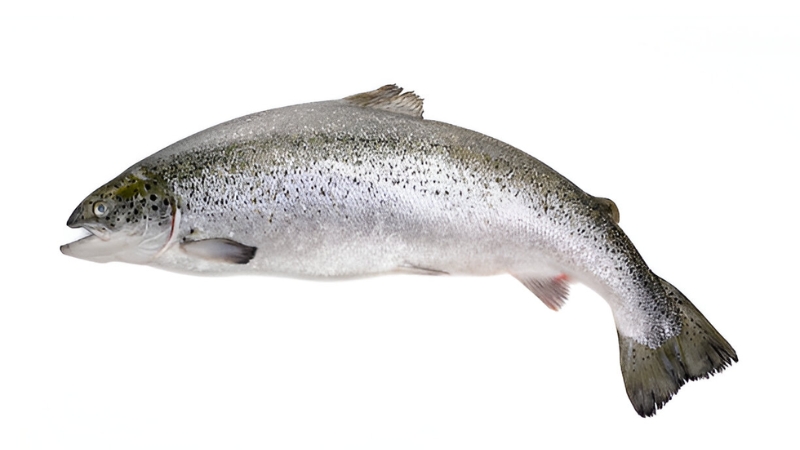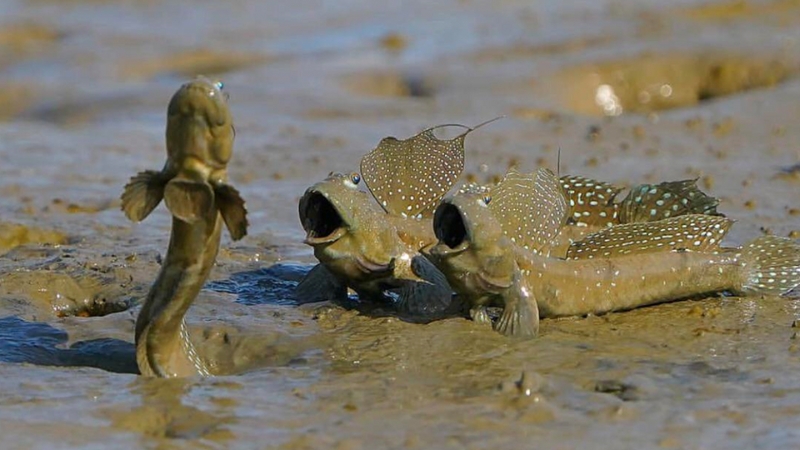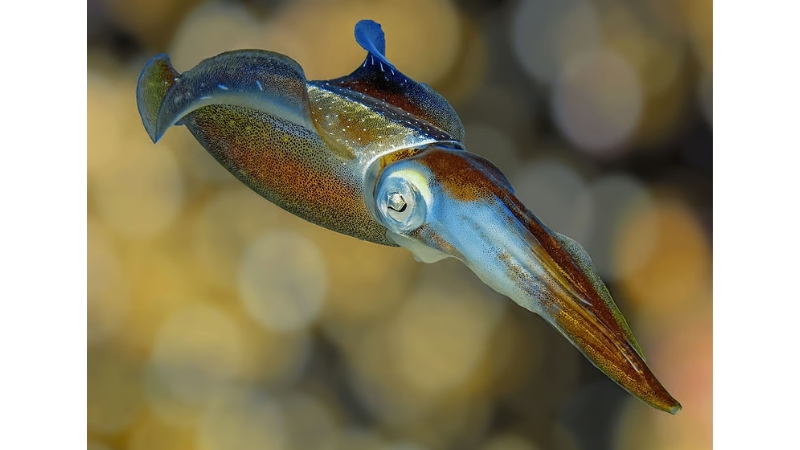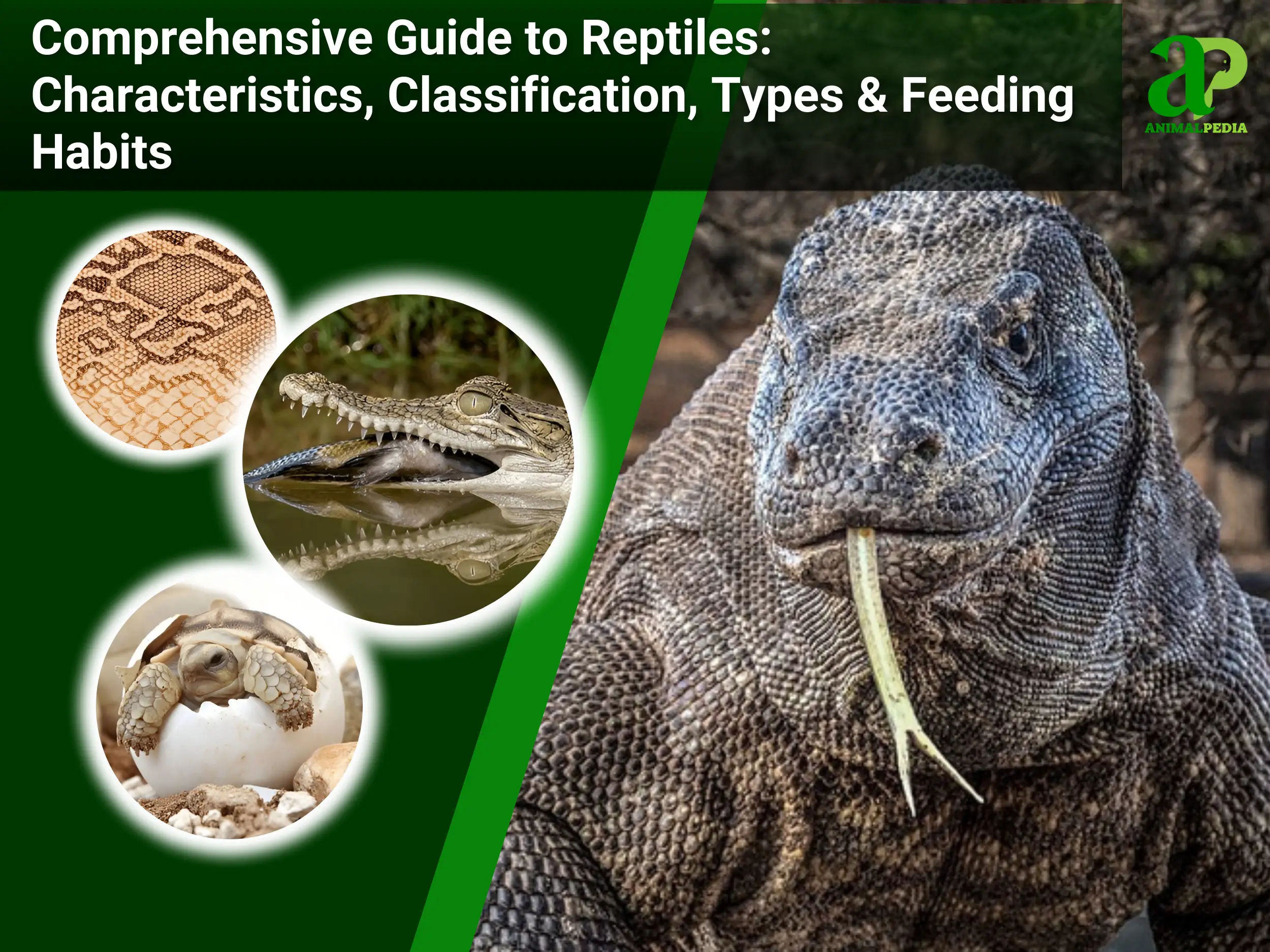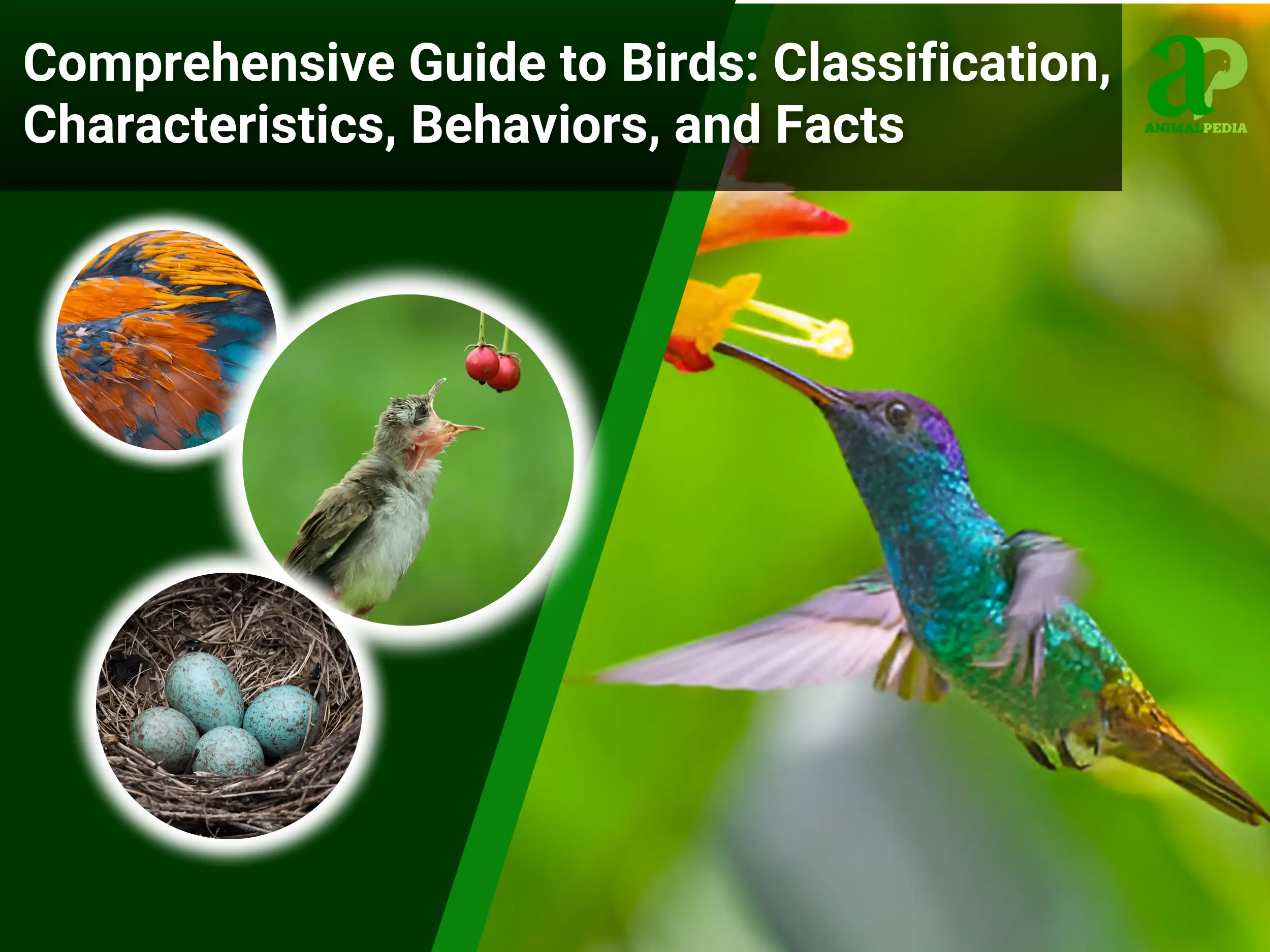Fishes (class Pisces) are an incredibly diverse superclass of cold-blooded, aquatic vertebrates distinguished by a streamlined body, fins for propulsion and steering, and gills for respiration. Comprising over 36,100 described species, they account for more than half of all known vertebrate life on Earth [7].
These fascinating creatures possess a unique suite of external characteristics that set them apart, including a lateral line system—a specialized sensory organ used to detect movement and pressure changes in the water—as well as a protective layer of scales. This broad group is organized into numerous orders, each with its own specialized adaptations and ecological niche, demonstrating a remarkable evolutionary success story spanning hundreds of millions of years.
The behavioral and reproductive strategies of fish are as varied as their physical forms, ranging from solitary hunters to species that form massive, coordinated schools. Their reproductive methods encompass a range of strategies, from laying vast numbers of eggs to giving birth to live young, demonstrating a remarkable adaptability to diverse aquatic environments.
Due to their critical position in aquatic food webs, both as predators and prey, fish are a cornerstone of ecosystem stability. This comprehensive guide will explore the diverse species, intricate characteristics, and many amazing facts that define this ubiquitous class of animals, providing an authoritative resource for enthusiasts, educators, and researchers alike.
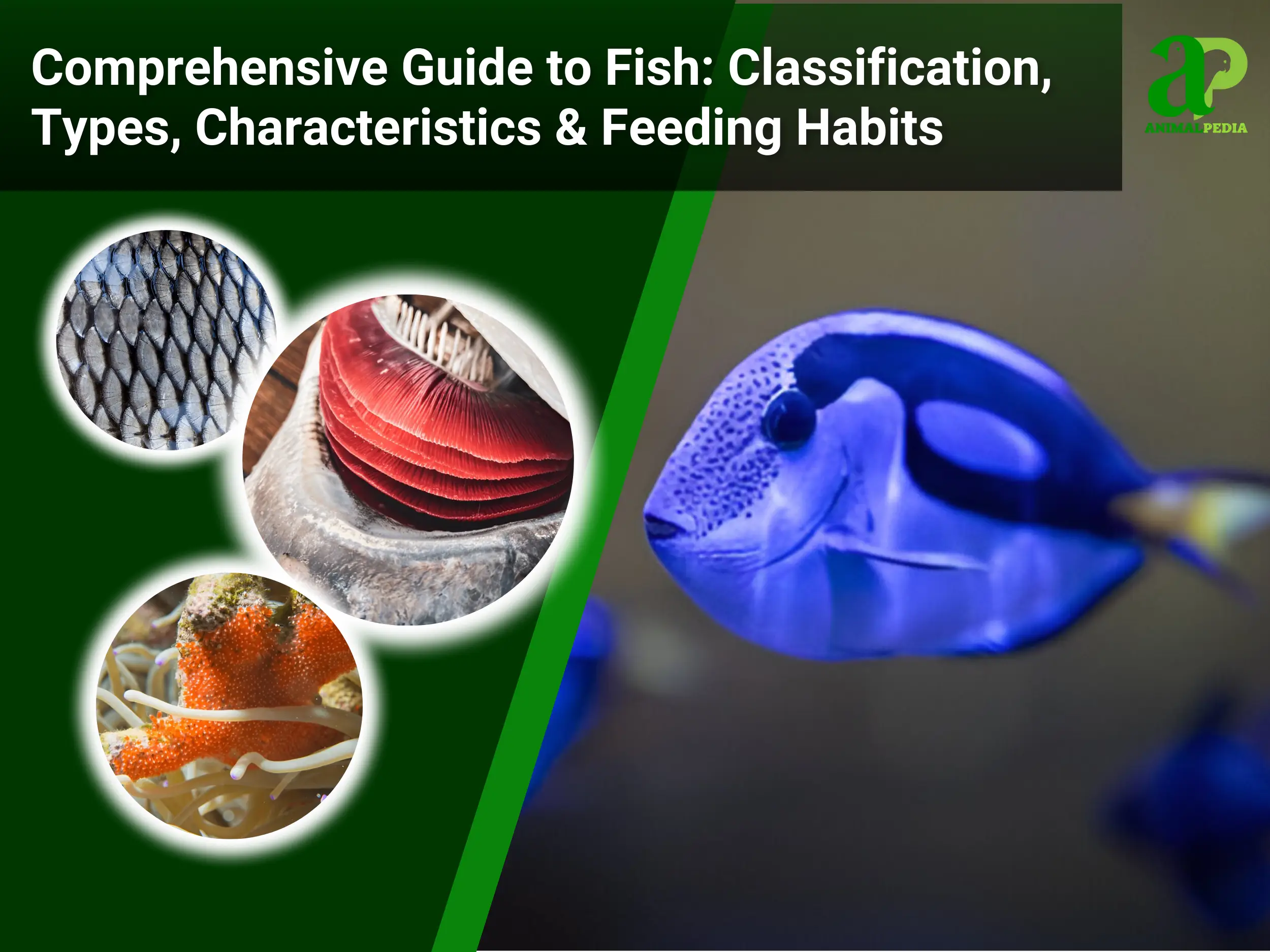
What are Fish?
Fish are cold-blooded vertebrates that breathe through gills and typically have fins for movement. This broad definition encompasses an extraordinary range of animals, from the smallest gobies to the largest sharks, all sharing a foundational anatomical and physiological blueprint that defines them as a distinct class of creatures. While the term “fish” is often used casually, its scientific meaning is quite specific.
A fish is any non-tetrapod chordate that lives exclusively in water, breathes using gills, and is cold-blooded. This precise zoological definition is crucial for distinguishing true fish from other aquatic animals. For instance, organisms like jellyfish and starfish, despite their names, are invertebrates without a backbone, while marine mammals such as dolphins and whales are warm-blooded and breathe air.
The classification of fish as vertebrates places them firmly within the kingdom Animalia and phylum Chordata, which signifies the presence of a backbone at some point in their life cycle. Their remarkable evolutionary journey has allowed them to colonize virtually every aquatic environment on the planet, from high-altitude glacial lakes to the frigid abyss of the Mariana Trench.
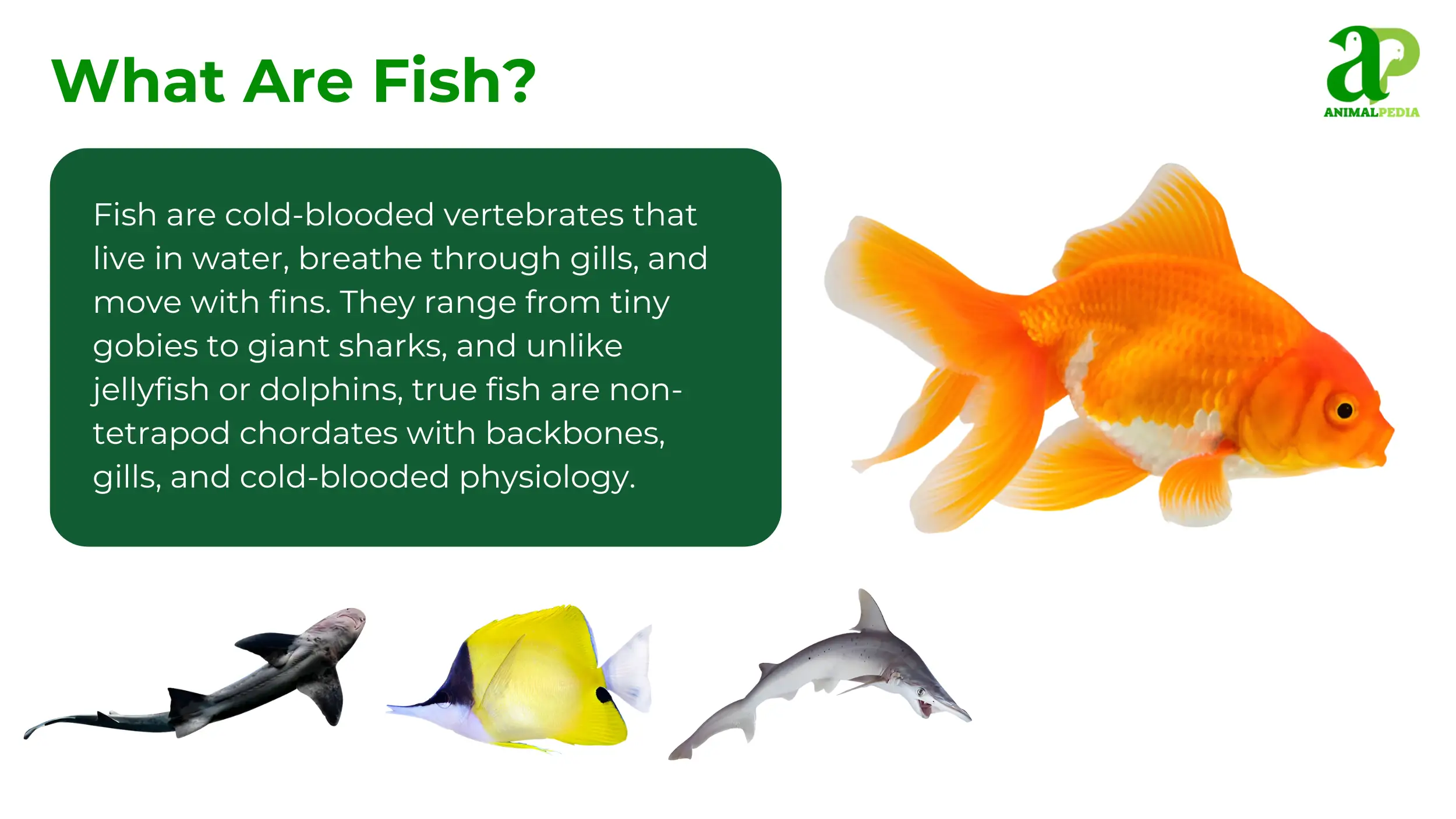
What Are The Main Types of Fish?
The main types of fish are classified into three distinct superclasses: Agnatha, Chondrichthyes, and Osteichthyes, with over 36,100 species in total.
- Osteichthyes (Bony Fishes): Comprising over 95% of all fish species, this is the largest group. They have a bony skeleton and a rigid operculum covering their gills, allowing them to breathe while stationary.
- Chondrichthyes (Cartilaginous fishes): This class comprises about 3% of all fish species and includes sharks, rays, and skates. Their skeleton is made of cartilage, not bone. They have placoid scales, an oily liver for buoyancy, and are mainly found in marine environments.
- Agnatha (jawless fish): This ancient group, representing less than 1% of all fish species, lacks jaws and features a cartilaginous skeleton. They include lampreys and hagfish, characterized by unique traits such as parasitic mouths and the production of slime.
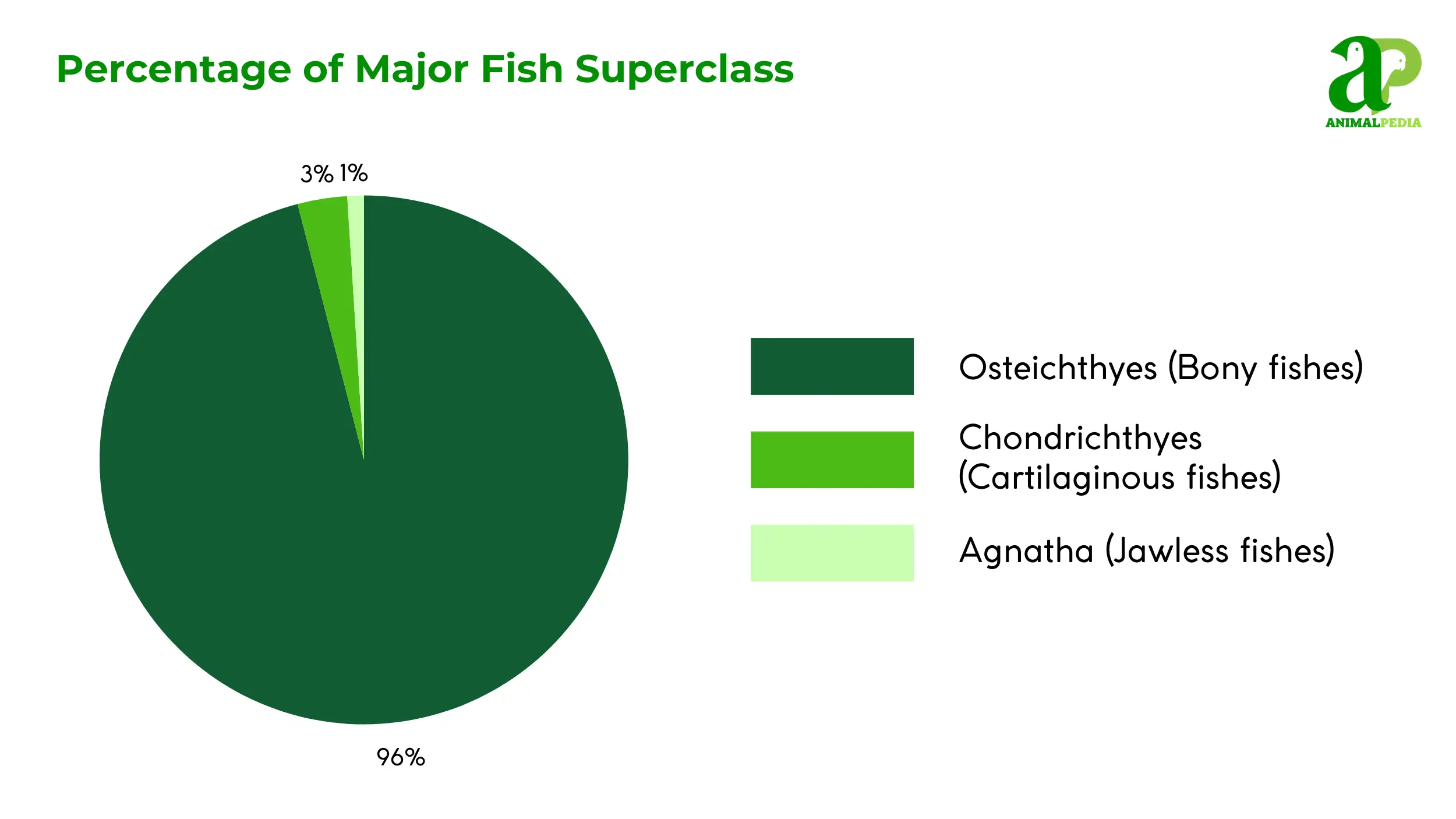
Superclass Osteichthyes (Bony fishes)
The vast majority of fish, comprising over 33,000 species, fall into the superclass Osteichthyes, also known as bony fish. These are distinguished by a skeleton of bone and a rigid operculum that covers their gills.
This evolutionary innovation allows them to breathe without having to constantly swim, a significant advantage over their cartilaginous counterparts. Their physical characteristics are incredibly varied, from the torpedo-shaped bodies of tuna to the flattened form of flounder, all united by a bony internal structure.
This superclass is further divided into two major groups: the ray-finned fishes (Actinopterygii) and the lobe-finned fishes (Sarcopterygii). Bony fish occupy nearly every aquatic habitat imaginable, from shallow reefs to deep ocean trenches, and their ecological roles are equally diverse, from herbivorous grazers to formidable predators.
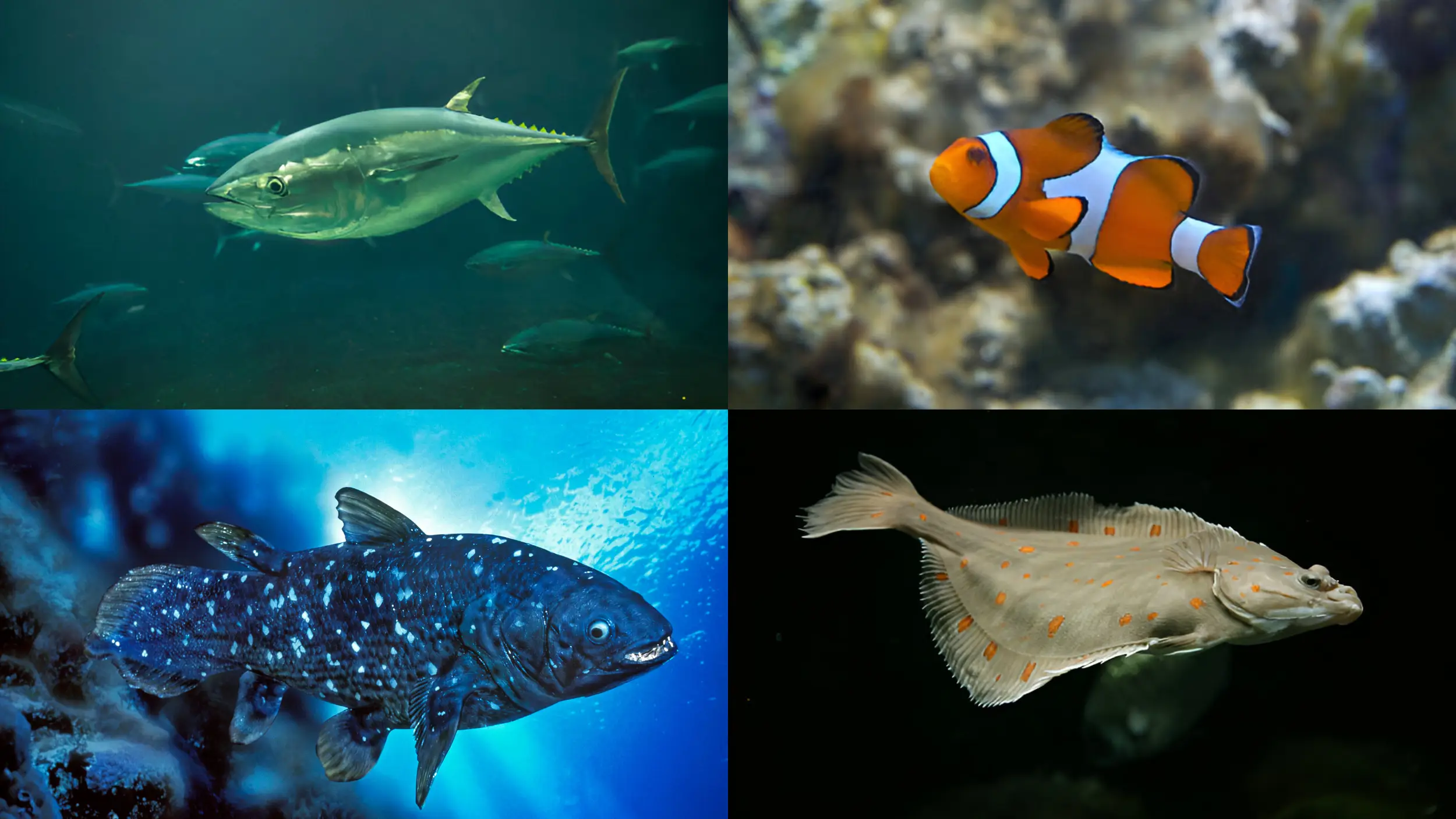
Superclass Chondrichthyes (Cartilaginous fishes)
Chondrichthyes are characterized by a skeleton composed of cartilage rather than bone, which gives them a lighter and more flexible body plan.
This group includes well-known predators such as sharks, rays, skates, and chimaeras, comprising about 1,200 species globally [6]. A key physical trait is their unique placoid scales, often referred to as dermal denticles, which give their skin a rough, sandpaper-like texture and reduce drag.
Unlike other fish, they lack a swim bladder, instead relying on an oily liver for buoyancy. Their primary distribution is in marine environments, where many species, like the great white shark, are apex predators that play a vital role in maintaining the health of ocean ecosystems [9].
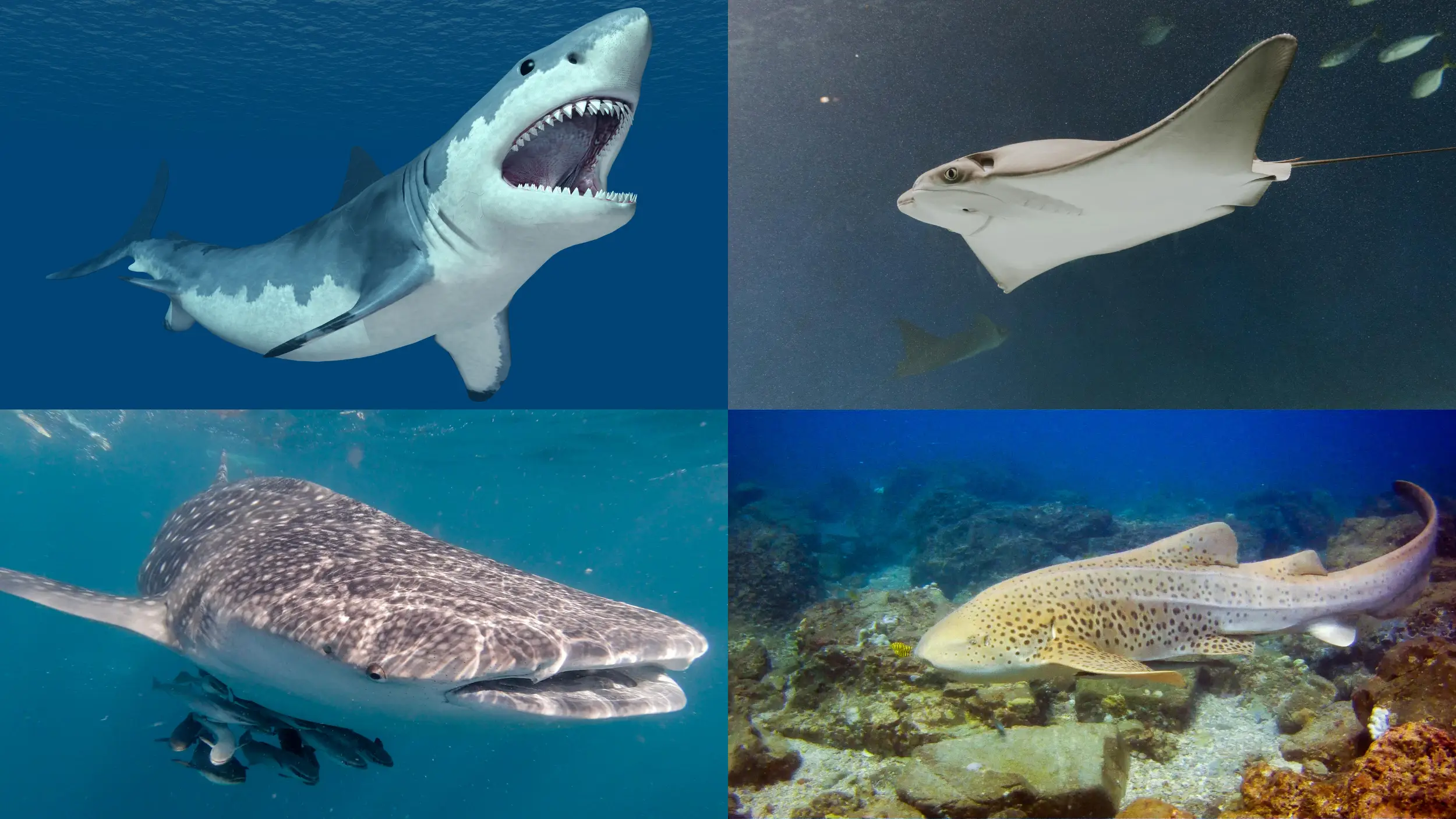
Superclass Agnatha (Jawless fishes)
This ancient group represents the earliest vertebrates, characterized by the absence of jaws and a skeleton composed entirely of cartilage. Despite their primitive appearance, these fish are highly adapted to their specific ecological niches. With fewer than 130 extant species, they are a minor yet crucial group in the phylogenetic tree of vertebrates [22].
The two main suborders are the parasitic lampreys and the scavenging hagfish. For instance, a sea lamprey (Petromyzon marinus) uses a sucker-like mouth filled with sharp teeth to attach to and feed on other fish.
Hagfish are renowned for their ability to produce copious amounts of slime as a defense mechanism, a truly unique physical trait. Their distribution is global, with them inhabiting both marine and freshwater environments.
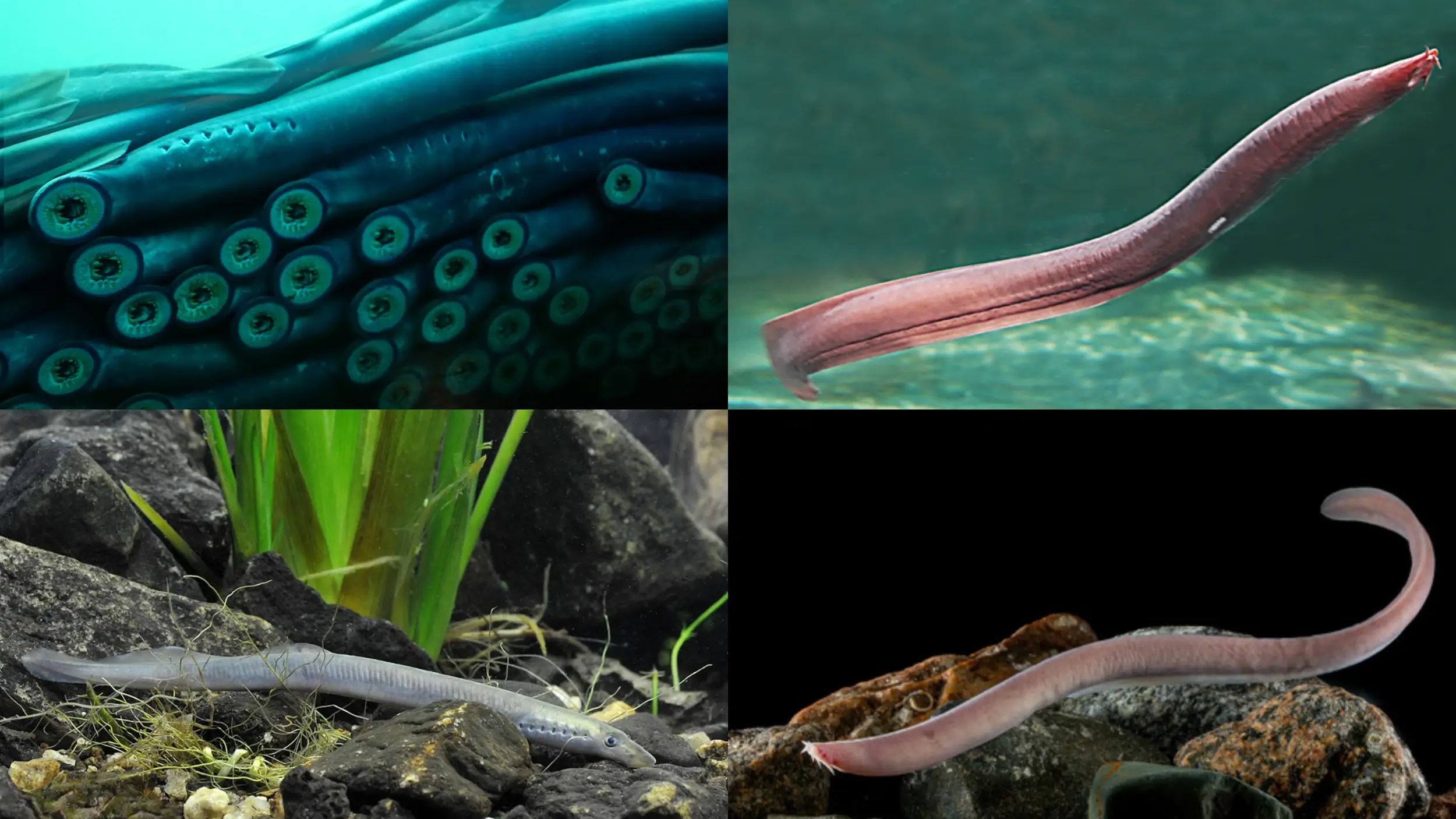
With an understanding of the three main superclasses, it becomes even more fascinating to look at specific examples of these fish and their incredible variety.
Complete List and Examples of Fish
This list provides a curated view into the world of fish, categorized by their common presence, iconic status, and specialized lifestyles.
Commonly Encountered Examples
- Common Goldfish (Carassius auratus): A popular domesticated freshwater fish known for its small size and docile nature, often kept in aquariums and ponds.
- Atlantic Salmon (Salmo salar): A well-known anadromous species that hatches in freshwater, migrates to the ocean to mature, and returns to its natal rivers to reproduce.
- Largemouth Bass (Micropterus salmoides): A powerful predatory sport fish with a large mouth and a greenish body, found in North American lakes and rivers.
Large and Iconic Examples
- Great White Shark (Carcharodon carcharias): An apex predator of temperate oceans, distinguished by its powerful build and sharp teeth. It can reach lengths of up to 20 feet (6.1 meters) and weigh over 4,000 lbs (1,814 kg) [16].
- Whale Shark (Rhincodon typus): The world’s largest fish, a filter feeder that inhabits tropical oceans. It can grow to more than 40 feet (12.2 meters) and weigh up to 40,000 lbs (18,143 kg) [16].
- Bluefin Tuna (Thunnus thynnus): A powerful, migratory species found in open oceans, known for its incredible speed. It can exceed 6 feet (1.8 meters) in length and 1,000 lbs (454 kg).
Specialized or Unique Habitats Examples
- Anglerfish (Lophiiformes order): A deep-sea fish that uses a bioluminescent lure on its head to attract prey in the dark abyss.
- Archerfish (Toxotes jaculatrix): A fish from Southeast Asia that hunts insects on land by shooting a jet of water from its mouth.
- Mudskipper (Periophthalmus genus): An amphibious fish that can walk on land and breathe air through its skin, commonly found in mangrove ecosystems.
A-Z Reference List
- Angelfish (Pterophyllum genus) – Habitat: Freshwater (Amazon River basin); Size: up to 6 inches (15.2 cm), 0.2 lbs (0.09 kg)
- Barracuda (Sphyraena genus) – Habitat: Tropical oceans; Size: up to 6 feet (1.8 meters), 100 lbs (45 kg)
- Betta (Betta splendens) – Habitat: Freshwater (rice paddies of Thailand); Size: up to 3 inches (7.6 cm), 0.02 lbs (0.009 kg)
- Clownfish (Amphiprioninae subfamily) – Habitat: Marine (coral reefs); Size: up to 4 inches (10.2 cm), 0.05 lbs (0.02 kg)
- Cod (Gadus genus) – Habitat: Marine (North Atlantic); Size: up to 3 feet (0.9 meters), 50 lbs (22.7 kg)
- Eel (Anguilliformes order) – Habitat: Marine & freshwater; Size: up to 10 feet (3 meters), 50 lbs (22.7 kg)
- Flounder (Pleuronectidae family) – Habitat: Marine (sandy seabeds); Size: up to 3 feet (0.9 meters), 30 lbs (13.6 kg)
- Goldfish (Carassius auratus) – Habitat: Freshwater; Size: up to 12 inches (30.5 cm), 2 lbs (0.9 kg)
- Halibut (Hippoglossus genus) – Habitat: Marine (North Pacific); Size: up to 8 feet (2.4 meters), 500 lbs (227 kg)
- Lionfish (Pterois genus) – Habitat: Marine (Indo-Pacific reefs); Size: up to 18 inches (45.7 cm), 2 lbs (0.9 kg)
- Marlin (Makaira genus) – Habitat: Tropical oceans; Size: up to 16 feet (4.9 meters), 1,400 lbs (635 kg)
- Mudskipper (Periophthalmus genus) – Habitat: Coastal mudflats; Size: up to 10 inches (25.4 cm), 0.5 lbs (0.2 kg)
- Pufferfish (Tetraodontidae family) – Habitat: Marine; Size: up to 2 feet (0.6 meters), 5 lbs (2.3 kg)
- Salmon (Salmo genus) – Habitat: Anadromous; Size: up to 5 feet (1.5 meters), 120 lbs (54.4 kg)
- Seahorse (Hippocampus genus) – Habitat: Marine (coral reefs); Size: up to 14 inches (35.6 cm), 0.05 lbs (0.02 kg)
- Shark (Great White) (Carcharodon carcharias) – Habitat: Temperate oceans; Size: up to 20 feet (6.1 meters), 4,000 lbs (1,814 kg)
- Swordfish (Xiphias gladius) – Habitat: Open ocean; Size: up to 14 feet (4.3 meters), 1,400 lbs (635 kg)
- Tuna (Thunnus genus) – Habitat: Open ocean; Size: up to 6 feet (1.8 meters), 1,000 lbs (454 kg)
- Trout (Oncorhynchus genus) – Habitat: Freshwater; Size: up to 3 feet (0.9 meters), 20 lbs (9.1 kg)
- Whale Shark (Rhincodon typus) – Habitat: Tropical oceans; Size: up to 40 feet (12.2 meters), 40,000 lbs (18,143 kg) [16]
The image below is a simple overview of the classification from subclasses to modern fish families, showing their main characteristics and representative species:
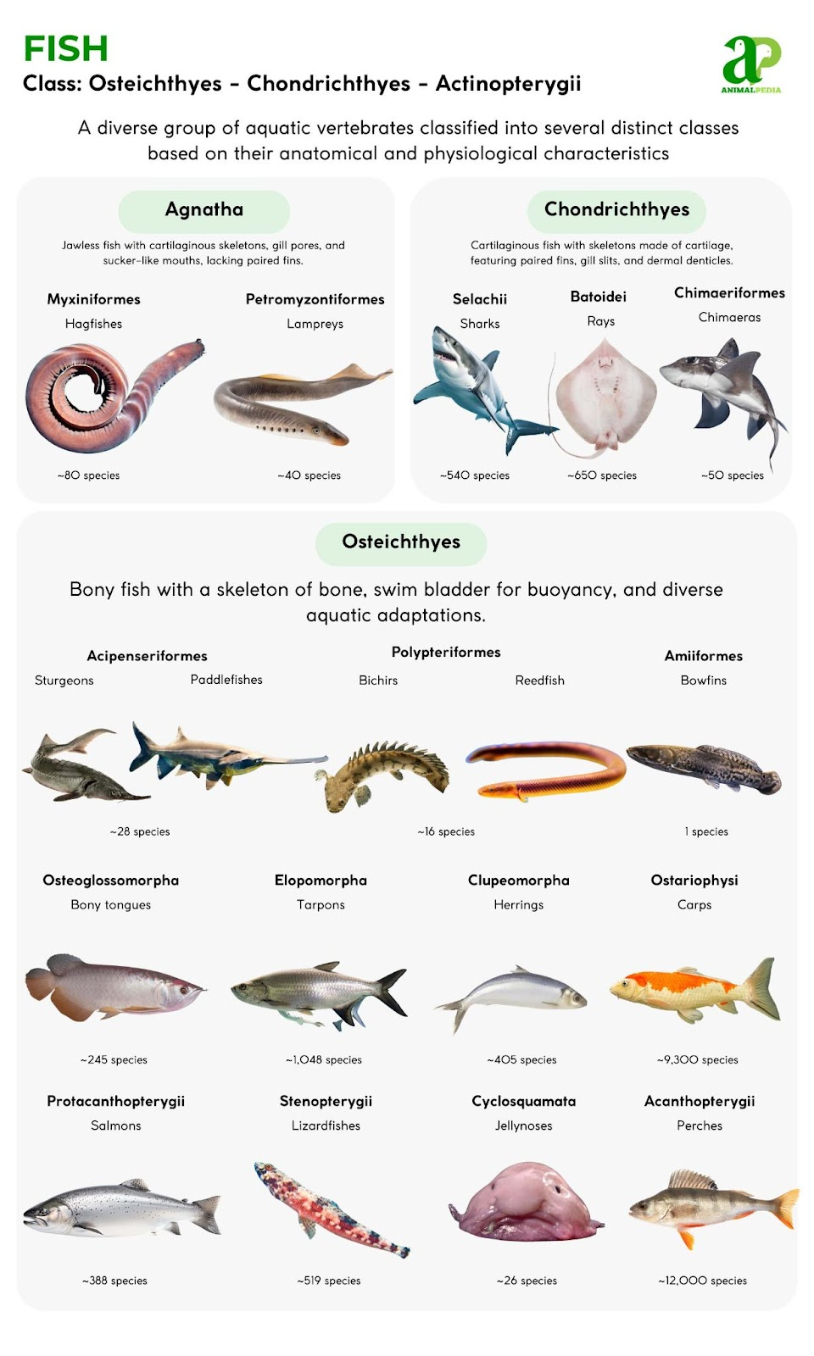
What are the key characteristics of Fish?
All fish share five key characteristics that distinguish them from other animal groups: gills, fins, a lateral line system, scales, and a cold-blooded physiology. These traits are fundamental to their existence, collectively representing a masterful set of adaptations for an aquatic life.
- Gills for Respiration: A defining feature of fish, gills are highly specialized respiratory organs that enable them to extract dissolved oxygen from water. This complex anatomical structure features a large surface area of fine filaments rich with blood vessels, ensuring efficient gas exchange. The continuous flow of water over the gills, known as ram ventilation or buccal pumping, is a critical process for their survival.
- Fins for Locomotion: Fins are the primary appendages used for movement, steering, and stability in water. They are essential for a wide range of aquatic maneuvers, from the rapid acceleration of a tuna to the delicate hovering of a seahorse. The different types of fins—dorsal, caudal, anal, pectoral, and pelvic—work in concert to provide propulsion, control pitch and yaw, and maintain balance.
- Lateral Line System: This highly advanced sensory organ is a unique feature of fish, composed of a series of microscopic pores that run along each side of their body. The lateral line contains specialized hair cells called neuromasts that detect subtle water movements, pressure changes, and vibrations, allowing fish to orient themselves, sense prey, avoid predators, and navigate in a school [23].
- Scales for Protection: The external body of most fish is covered in a protective layer of scales, which are small, rigid plates that offer a defense against injury and parasites. The arrangement of these scales creates a smooth surface that minimizes drag, contributing to efficient movement through water. The type and structure of scales can vary widely, from the cycloid scales of salmon to the placoid scales of sharks.
- Cold-blooded Physiology: Also known as ectotherms, fish are unable to regulate their own body temperature internally. Instead, their body temperature fluctuates in response to the surrounding water temperature. This physiological strategy enables them to conserve a significant amount of energy, although it also means their metabolism and activity levels are directly influenced by environmental thermal conditions.
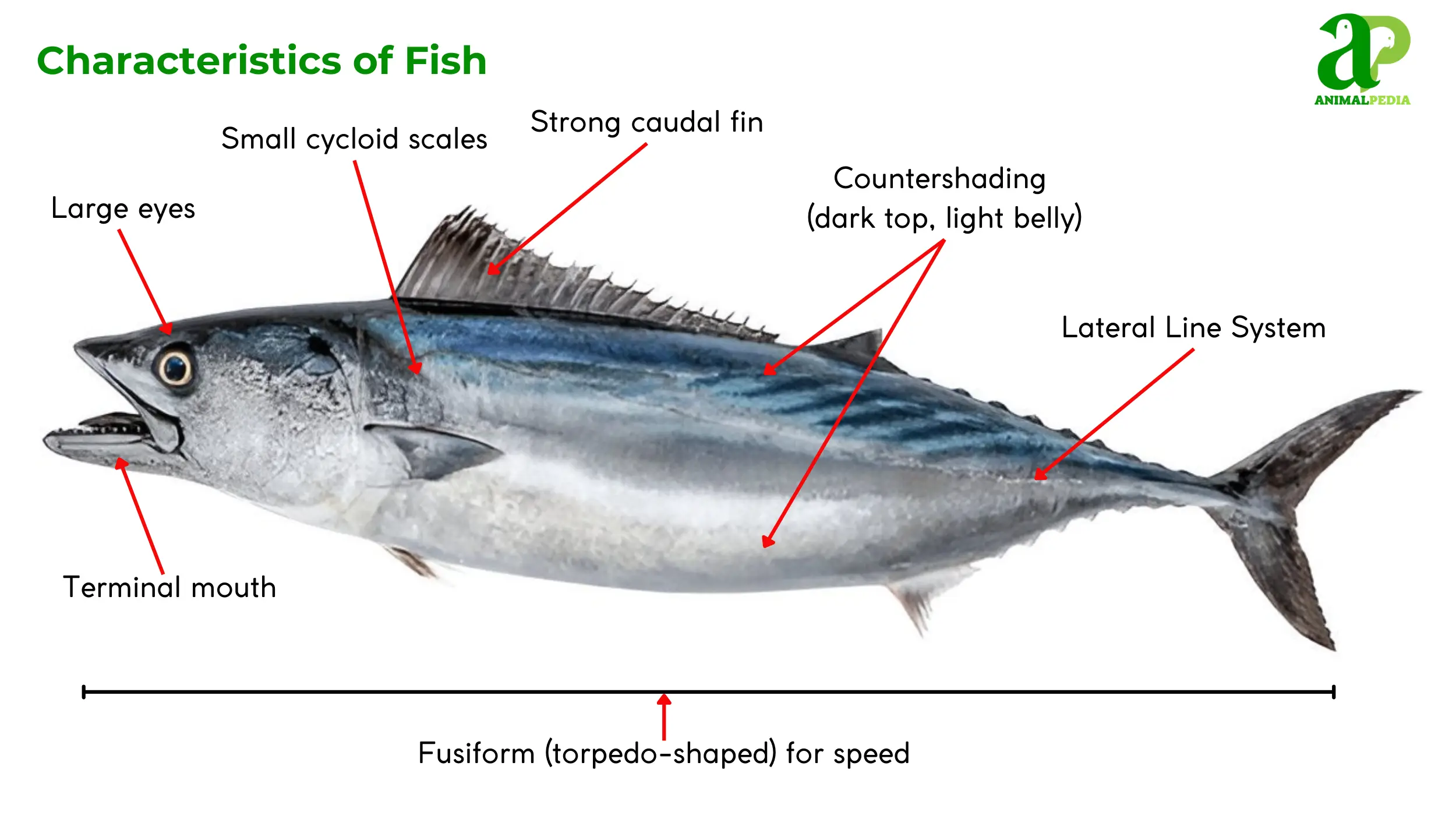
The synergy of these characteristics is what has allowed fish to dominate aquatic environments for millions of years. Their streamlined bodies and specialized fins facilitate effortless movement, while their gills provide a constant supply of oxygen. The lateral line acts as an advanced navigation system, and scales offer robust protection, together forming a highly effective biological design perfectly suited for an underwater existence.
These physical characteristics are a testament to millions of years of evolution. How did fish develop these defining traits?
How did Fish evolve?
The evolutionary history of fish is a remarkable journey that began over 500 million years ago during the Cambrian period, when their ancestors, the primitive chordates, first appeared. The earliest true fish were jawless, armored creatures, a lineage that led to today’s hagfish and lampreys.
A pivotal moment in this history was the development of jaws in the early Silurian period, an innovation that fundamentally changed predation and led to an explosive diversification of species [22]. This evolutionary leap separated fish into the major groups we know today, setting the stage for their eventual dominance of aquatic ecosystems.
The Devonian period, often referred to as the “Age of Fishes,” saw a massive adaptive radiation of jawed fish, including the ancestors of modern cartilaginous and bony fishes. This era was characterized by the evolution of key features, including paired fins that dramatically enhanced maneuverability and hunting prowess, as well as the development of robust bone skeletons.
The success of these groups is directly linked to these innovations, establishing a continuous lineage of adaptive success that connects ancient armored fish to the incredible diversity of modern species in the superclasses Chondrichthyes and Osteichthyes.
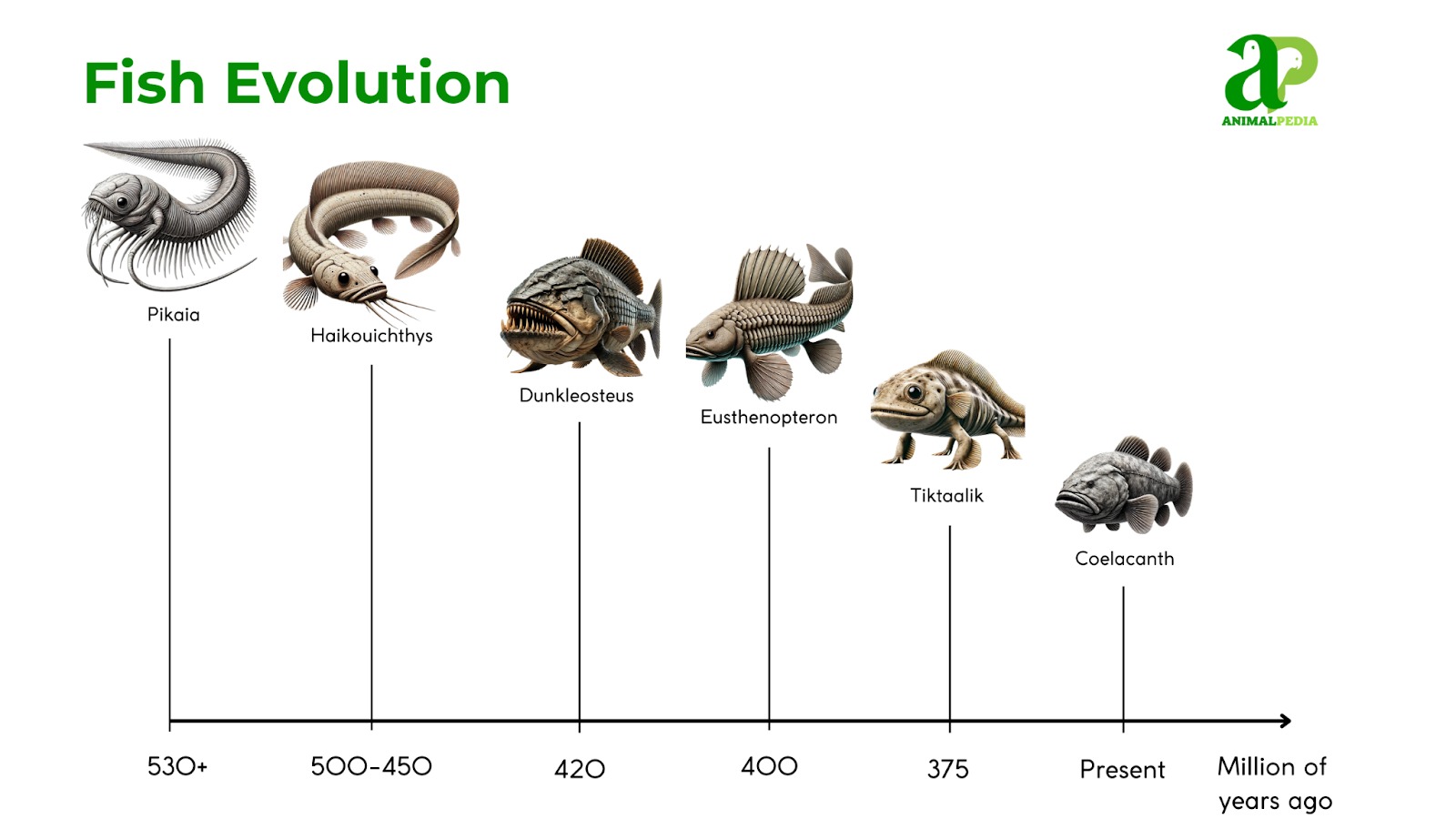
The long evolutionary journey of fish has equipped them with a remarkable array of physical traits, which in turn shape their diverse and complex behaviors.
Where Do Fish Live?
Fish predominantly inhabit aquatic environments worldwide, encompassing both freshwater and saltwater ecosystems that support their physiological needs for respiration through gills. This class of vertebrates, known scientifically as Actinopterygii for ray-finned species, thrives in diverse water bodies, ranging from shallow streams to deep oceanic trenches, with adaptations that enable survival in a wide range of salinities and pressures.
While most species require permanent immersion in water, some, like lungfish, can endure temporary terrestrial exposure in arid regions, challenging the notion that all fish are strictly aquatic.
Specific habitat preferences include marine environments such as coral reefs in tropical oceans, where biodiversity hotspots like the Great Barrier Reef host thousands of species; freshwater wetlands and forests with rivers like the Amazon Basin, supporting high endemic diversity; and even high-altitude lakes in the Andes or deep-sea abysses like the Mariana Trench, home to snailfish at depths exceeding 8,000 meters [11].
Climate requirements vary, with polar species possessing antifreeze proteins to survive sub-zero temperatures [4], while tropical fish face restrictions in cooler latitudes.
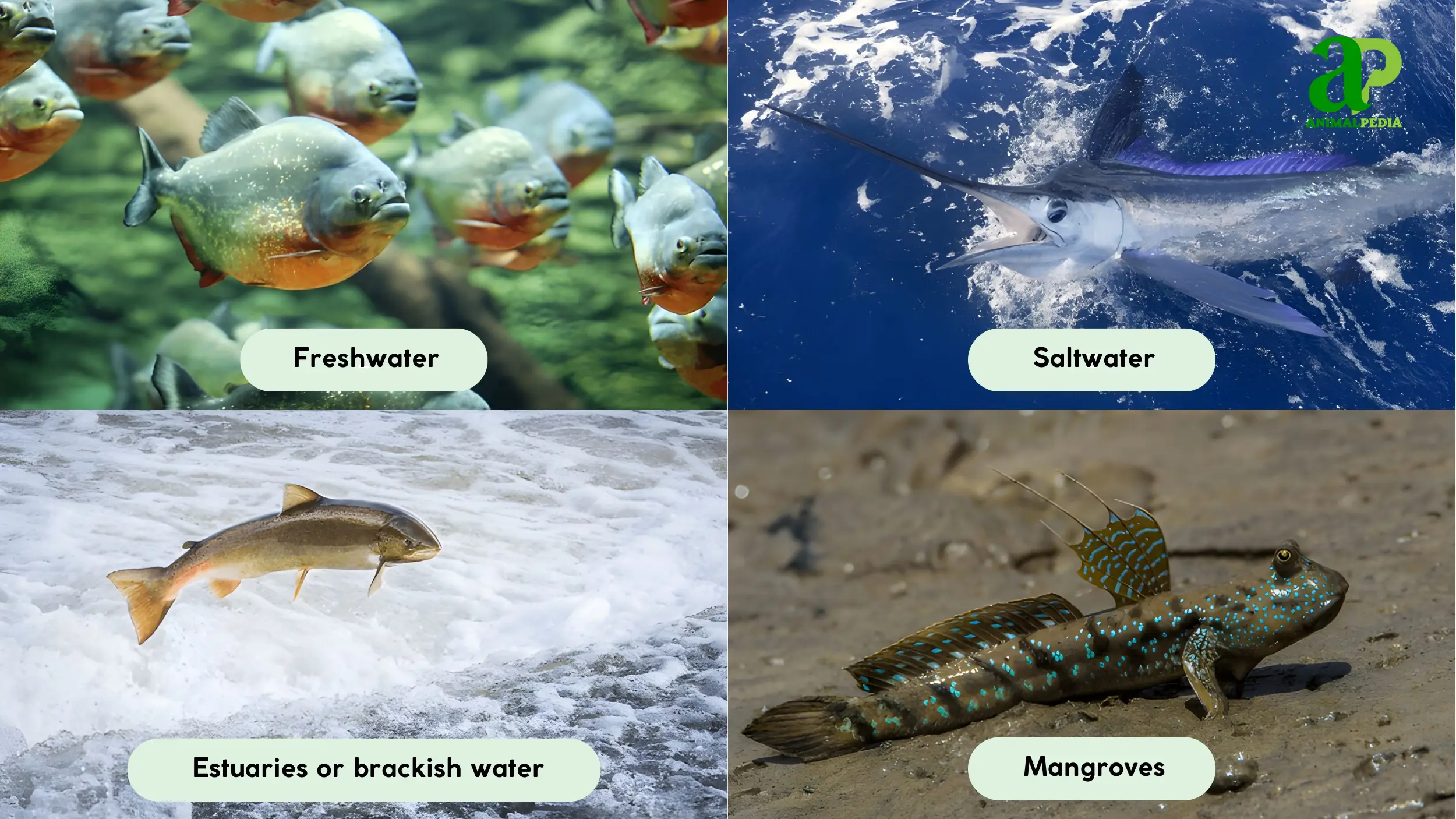
Altitude and latitude patterns exhibit greater diversity near the equator, decreasing poleward; however, adaptive radiations—evolutionary diversifications into new niches—occur in isolated habitats, such as African rift lakes. Opposing views suggest that human-induced changes, such as climate warming, may shift these distributions, potentially reducing the number of polar specialists [10].
How Do Fish Behave?
The unique physical characteristics of fish, which are perfectly adapted for aquatic life, directly inform their diverse behavioral strategies. These behaviors can be categorized into four primary areas: diet and feeding, reproduction and development, movement and locomotion, and communication and defense.
- Diet and Feeding Strategies: Fish exhibit diverse diets, ranging from carnivory to herbivory, supported by specialized adaptations. Their feeding strategies, like ambush or active hunting, are influenced by their ectothermic metabolism, allowing for efficient, less frequent feeding.
- Reproduction and Development: Fish reproduction varies, including oviparous (egg-laying), ovoviviparous (eggs hatch inside), and viviparous (live birth). They display complex courtship, mating, and parental care behaviors, from releasing eggs to guarding nests.
- Movement and Locomotion: Fish locomotion primarily involves swimming, with their body shape and fin coordination being key to efficiency. For instance, a torpedo-shaped body is for speed, while fins provide propulsion, stability, and steering.
- Communication and Defense: Fish use visual, chemical, and auditory signals to communicate for mating or social purposes. Their defense mechanisms include camouflage, schooling, venomous spines, and the ability to inflate their bodies.
Diet and Feeding Strategies
Fish exhibit a remarkable range of dietary habits, from carnivorous predators that actively hunt other organisms to herbivorous grazers and omnivores that consume a variety of plant and animal matter. These diverse diets are supported by a wide array of specialized feeding strategies and anatomical adaptations.
Some fish employ ambush predation, lying in wait for unsuspecting prey, while others engage in active hunting, using powerful jaws and specialized teeth to capture their meals. The relationship between a fish’s body size and its prey selection is often a significant factor, with larger fish typically targeting larger food sources.
Many fish have evolved highly specific anatomical features to support their diets, such as the sharp, venomous spines of the lionfish for defense, or the powerful, bone-crushing jaws of some carp species. The ectothermic nature of fish directly impacts their feeding patterns, as their metabolic rate and energy requirements are lower than those of endotherms.
This can lead to less frequent, but often highly efficient, feeding bouts, allowing them to conserve energy when food is scarce or environmental conditions are unfavorable [8]. These complex feeding dynamics are a testament to their profound adaptability.
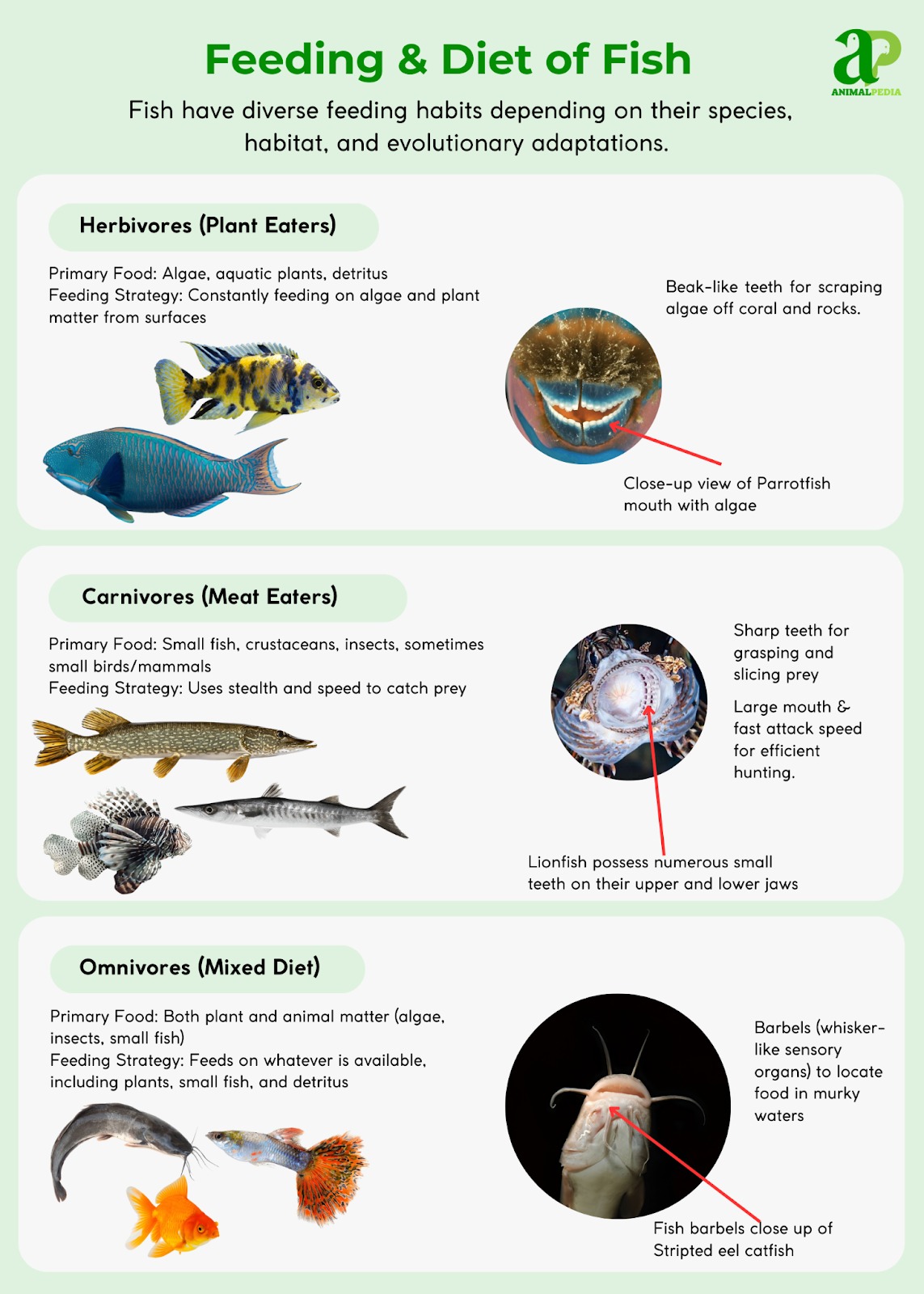
Reproduction and Development
Fish employ a variety of reproductive methods to ensure the continuation of their species, primarily categorized as oviparous, ovoviviparous, and viviparous. The majority of fish are oviparous, meaning they lay eggs that hatch outside the body, with a male fertilizing the eggs after they have been released.
Conversely, ovoviviparous fish retain the eggs within the female’s body until they hatch, after which she gives birth to live young. A smaller number of species are truly viviparous, where the developing embryos receive nourishment directly from the mother, similar to mammals.
Mating behaviors are equally diverse, involving complex courtship rituals, territorial displays, and seasonal breeding patterns that are often triggered by specific environmental cues, such as water temperature or photoperiod.
Parental care varies dramatically among species, ranging from no care at all, where vast numbers of eggs are released into the open water, to extensive care, where one or both parents guard the eggs and newly hatched young in nests. These intricate life cycles and developmental stages highlight the sophisticated strategies fish have evolved to maximize reproductive success [12].
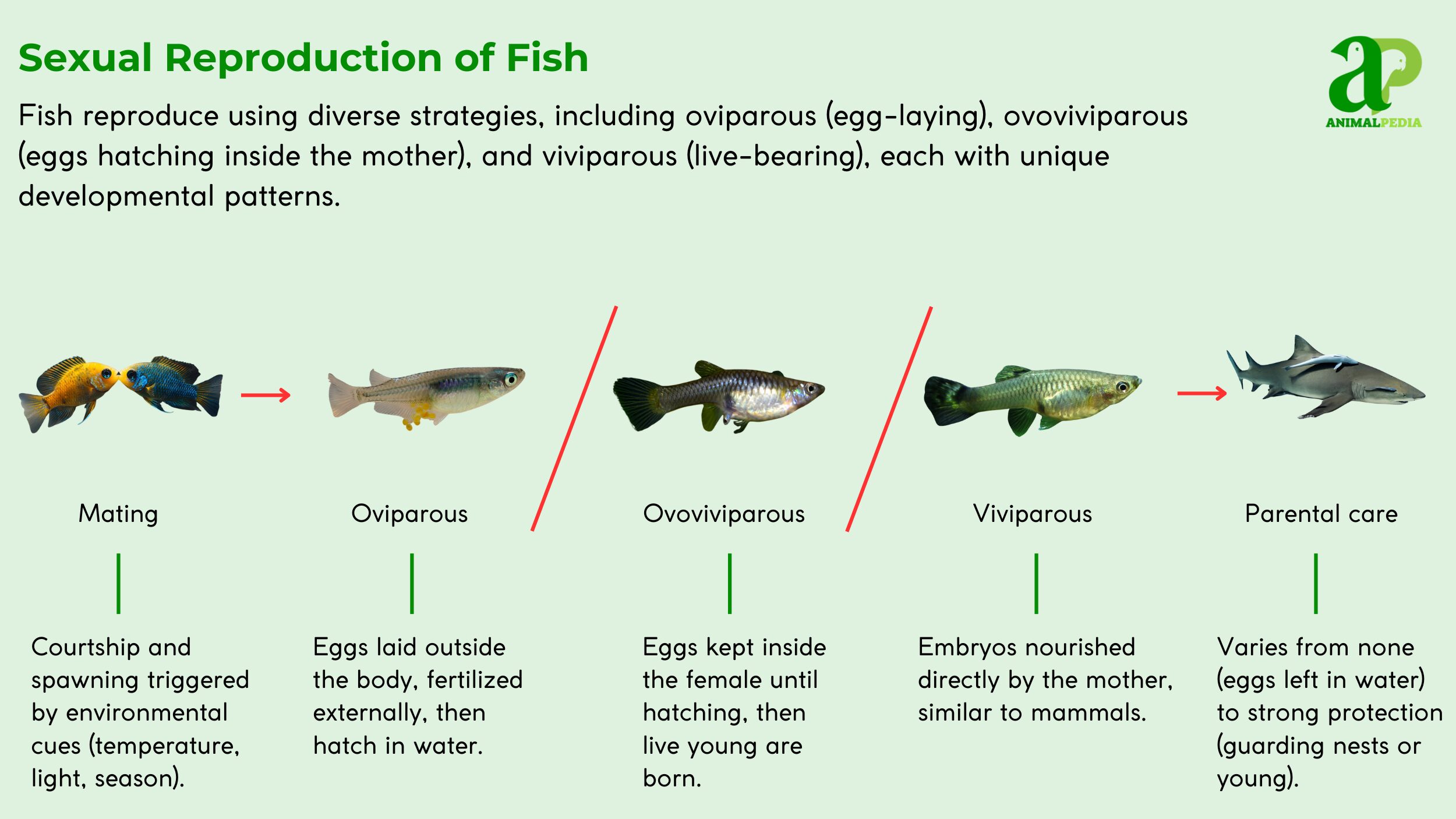
Movement and Locomotion
The primary mode of locomotion for fish is swimming, and they have evolved a wide array of techniques and specialized body structures to achieve this. The overall shape of a fish’s body, its hydrodynamics, is a key determinant of its swimming efficiency and speed.
Fusiform, or torpedo-shaped, bodies are highly effective for fast, continuous swimming in open water, while flattened, disc-shaped bodies are better suited for maneuvering in tight spaces or along the seabed. These physical forms are a direct response to the specific ecological niches they occupy, allowing for specialized aquatic behaviors.
Locomotion is further enhanced by the coordinated action of their fins. The caudal fin, or tail, provides primary propulsion, while the dorsal and anal fins are crucial for stability and preventing the fish from rolling. Pectoral and pelvic fins are used for steering, braking, and making precise movements.
Some fish have evolved truly unique movement strategies, such as the gliding of flying fish, which use their enlarged pectoral fins to escape predators, or the vertical “hopping” of mudskippers on land. These fascinating adaptations demonstrate the remarkable relationship between anatomy and function [13].
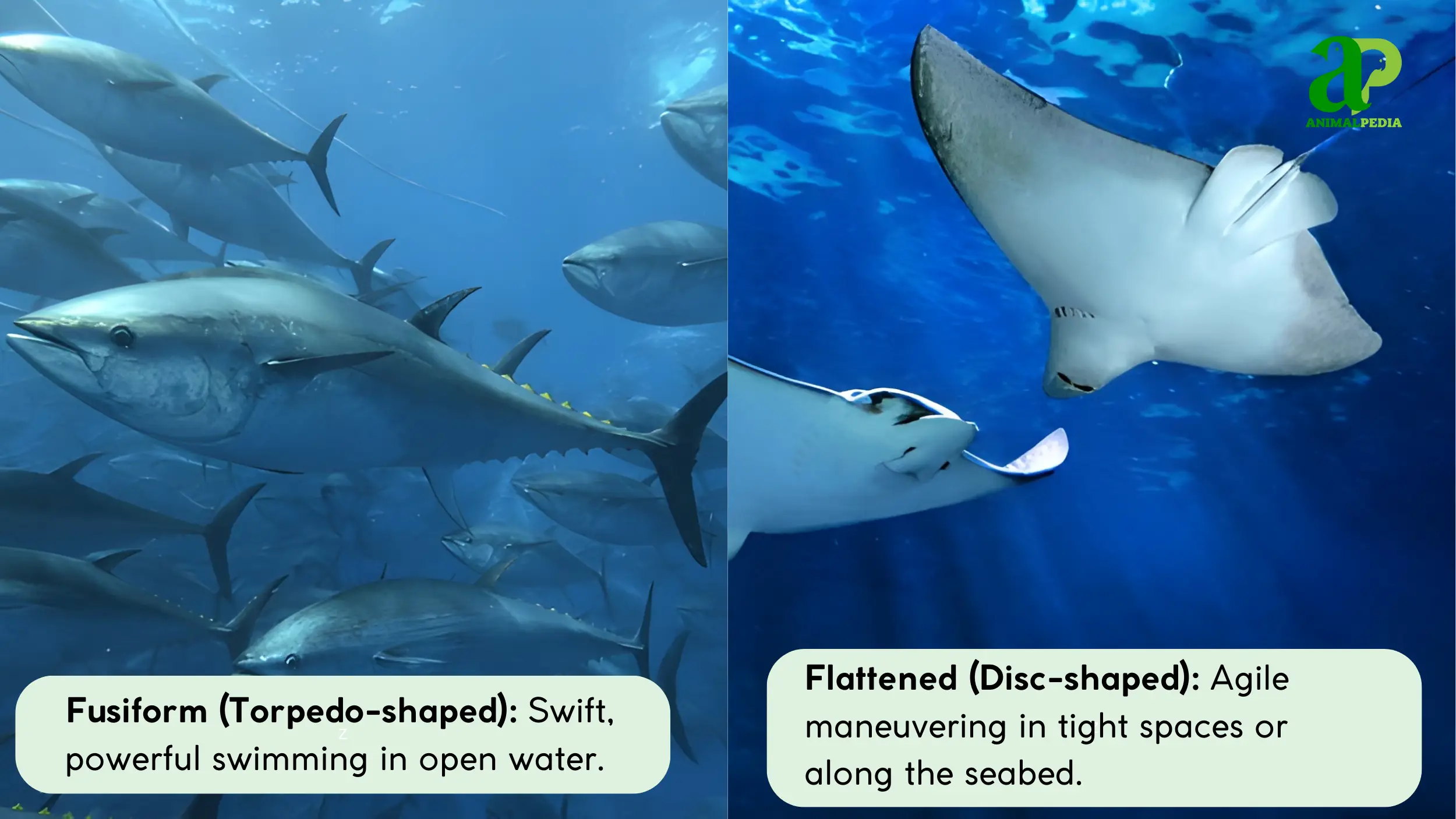
Communication and Defense
Fish communicate using a variety of sensory channels, including visual, chemical, and auditory signals, often without requiring physical contact. Visual communication, such as changes in body coloration, elaborate fins, and specific body postures, is frequently used during courtship rituals or territorial disputes.
Chemical communication involves the release of pheromones, which are chemical signals that can attract mates, alert other fish to a predator, or mark territories. These subtle forms of communication are essential for social cohesion and survival in complex aquatic environments.
Defense mechanisms in fish are equally varied and often highly effective. Many species rely on camouflage to blend in with their surroundings, a strategy that is particularly effective for both ambush predators and prey species.
When faced with a threat, fish may employ threat displays, such as rapidly darting movements, to confuse predators or school together to create a formidable, coordinated defense. Some fish have evolved physical defenses, such as venomous spines, powerful electric shocks, or the ability to inflate their bodies with water, as seen in pufferfish, making them difficult to swallow [21].
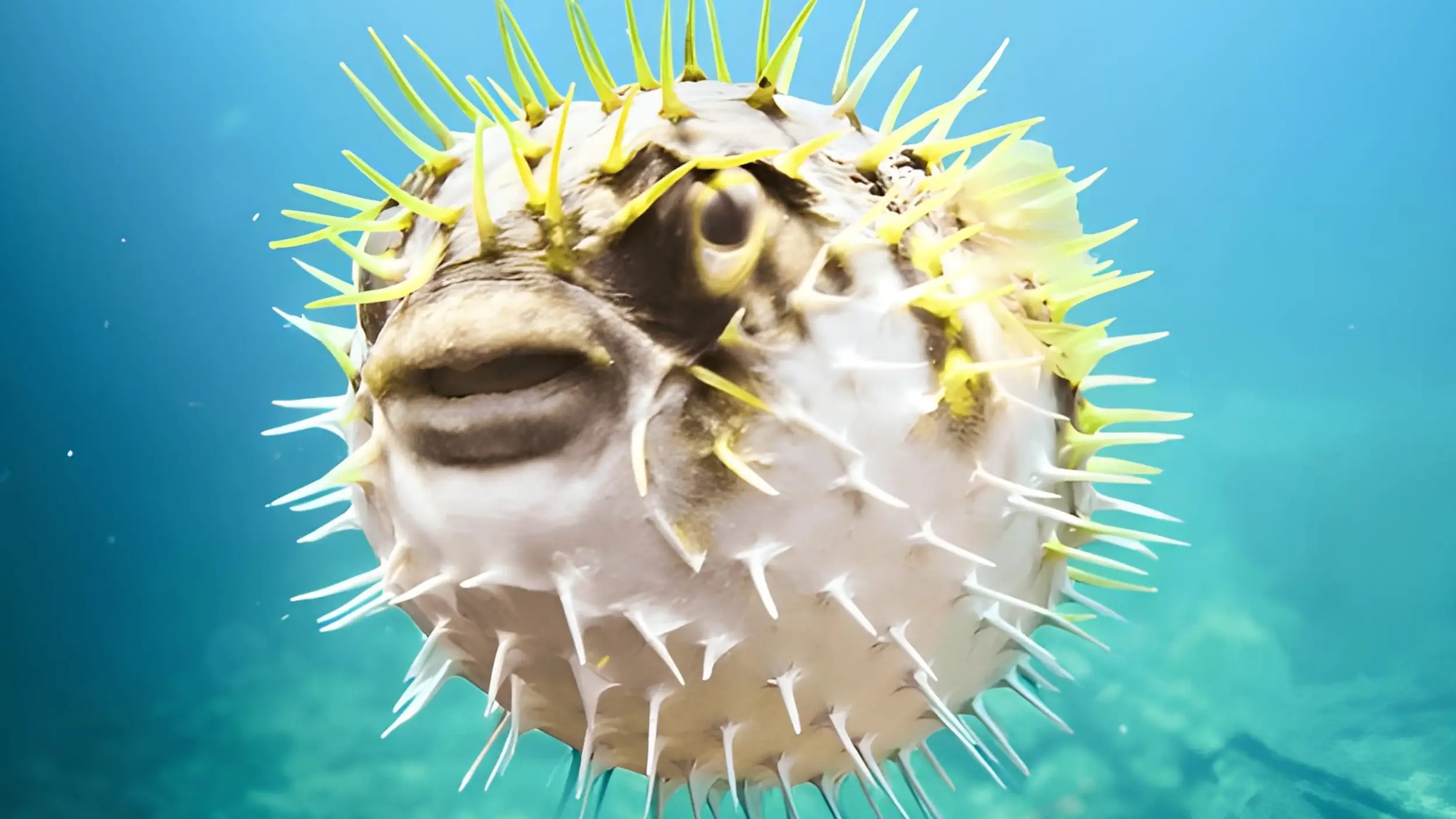
Understanding the intricate behaviors of fish gives us a new appreciation for them, but how do we, as humans, fit into their world?
How Do Humans Interact With Fish?
While fish have a rich biological life of their own, humans have developed a complex relationship with these creatures, moving beyond simple observation to direct interaction. This engagement can be broadly categorized into two key areas: the popular hobby of keeping fish as pets and their extensive commercial and cultural significance.
Fish as Pets and in Captivity
Keeping fish as pets, a hobby that dates back centuries, is a globally popular activity driven by a desire to observe their unique behaviors and vibrant aesthetics [19]. The hobby encompasses an immense range of species, from the ubiquitous goldfish and betta fish in freshwater aquariums to the more complex and demanding saltwater species, such as clownfish and tangs.
Responsible ownership is paramount, requiring a thorough understanding of each species’ specific environmental needs, including water temperature, pH levels, and suitable tank sizes. For example, while many believe goldfish thrive in small bowls, scientific evidence shows they require large, well-filtered aquariums to reach their full size and lifespan, a misconception that has led to countless ethical debates [19].
Beyond private homes, fish play a crucial educational role in public aquariums and zoos. These institutions provide controlled environments where the public can observe a diverse range of species, from tiny reef dwellers to massive sharks, and learn about their biology and the challenges associated with their conservation. This captive viewing can inspire a deeper appreciation for aquatic life and support vital research.

However, it also raises ethical questions about the welfare of animals held in captivity, a discussion that has led to strict regulations and a focus on replicating natural habitats as closely as possible to ensure the health and psychological well-being of the inhabitants.
Commercial and Cultural Uses of Fish
Fish serve a diverse array of commercial and cultural purposes, with their primary use being for human consumption. Globally, fish is a vital source of protein, especially in coastal communities and cultures where seafood is a dietary staple. However, this high demand has contributed to a growing concern over the sustainability of wild fish populations.
In response, modern aquaculture, also known as fish farming, has emerged as a significant industry, providing a means to meet demand while reducing pressure on natural fish stocks [26]. While this practice offers an alternative to overfishing, it also presents its own challenges, such as the potential for disease spread and waste management, which are areas of ongoing research and regulation.
Beyond food, fish and their byproducts have several other applications. For instance, fish oil, rich in omega-3 fatty acids, is widely used in dietary supplements and pharmaceuticals, with research highlighting its benefits for cardiovascular and cognitive health [24].
In some cultures, certain fish are used in traditional medicine or hold deep symbolic significance in art and mythology. The demand for fish skins has also created a niche market for the leather and fashion industries, though these applications are subject to increasing ethical scrutiny and a push toward sustainable sourcing. This complex web of uses underscores the deep and multifaceted connection between humans and fish.

Our interactions with fish, from pets to commercial industries, have had a significant impact. This raises a crucial question about the future of many species.
Are Fish Endangered and How Can We Protect Them?
Yes, many fish species are currently at risk, with the primary threats stemming from human activities. According to the International Union for Conservation of Nature (IUCN) Red List, a significant portion of fish species are now listed as vulnerable, endangered, or critically endangered, with over a third of all freshwater fish species currently threatened with extinction [10].
The primary drivers of this decline include habitat loss and degradation from pollution and coastal development, overfishing and illegal fishing practices that deplete populations faster than they can recover, and the profound impacts of climate change, which alter ocean chemistry and water temperatures. These stressors, often compounded, create a complex web of threats that endanger species across all aquatic environments.
Protecting fish populations requires a combination of large-scale conservation efforts and individual action. Successful examples, such as the recovery of the Atlantic sturgeon, highlight the effectiveness of international fishing moratoria and the restoration of key river habitats, demonstrating that targeted, collaborative action can reverse population declines [1].
On an individual level, we can all contribute by making sustainable seafood choices, which involves opting for fish from well-managed fisheries or aquaculture operations to reduce pressure on wild stocks.
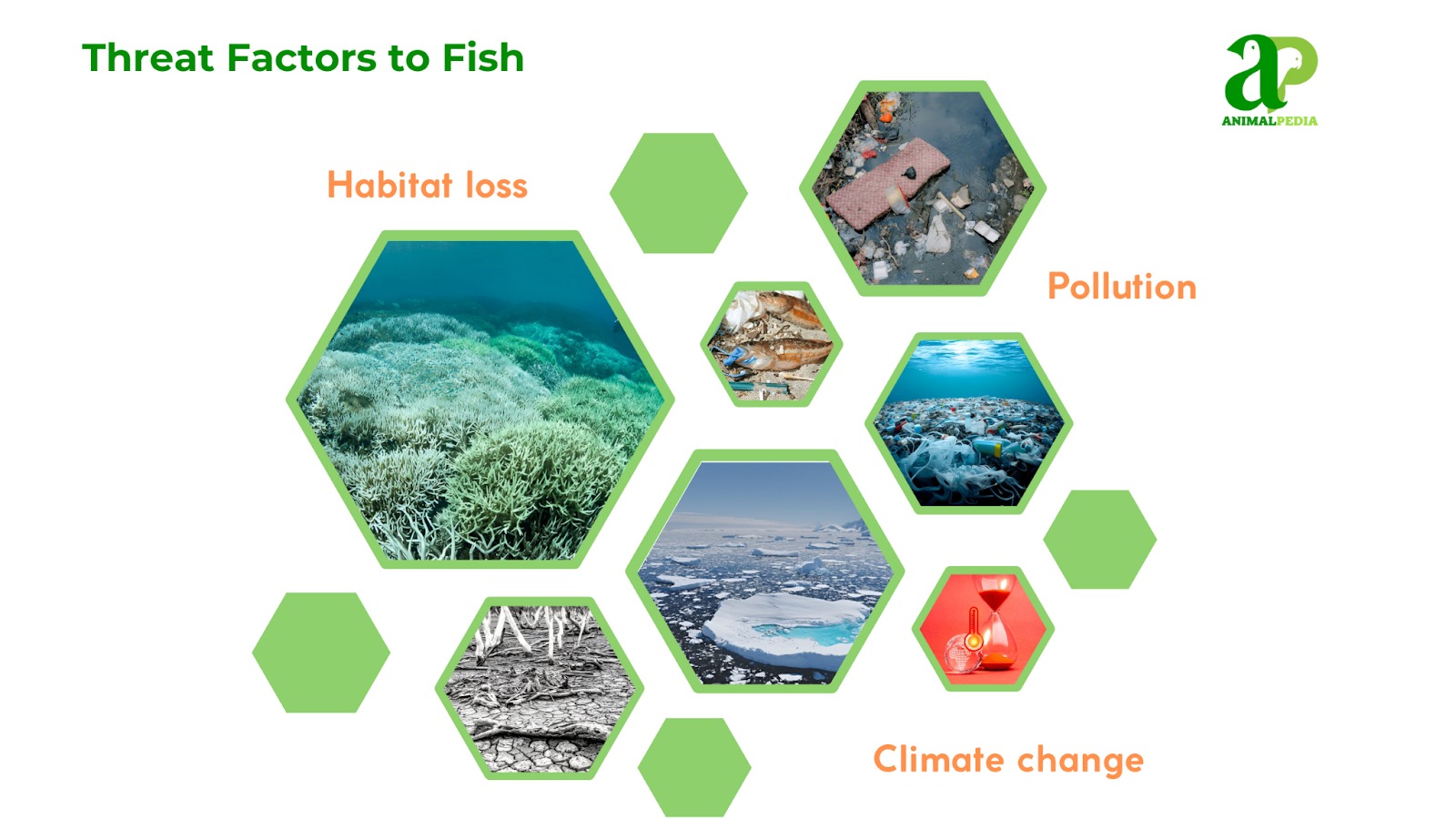
Additionally, supporting organizations that advocate for marine protected areas, promoting clean waterways, and educating others about the ecological importance of fish are all critical steps. This collective effort is essential not only for the survival of individual species but also for maintaining the health and balance of entire aquatic ecosystems.
With a clear view of the threats fish face and how to help, many other questions about their unique biology and our relationship with them often arise.
Frequently Asked Questions About Fish
Can all fish be kept as pets?
No, not all fish are suitable as pets. Many species, particularly larger or deep-sea fish, have specialized needs for vast habitats, precise water conditions, or are protected by law, making responsible ownership impractical or illegal for the average person [17].
Do fish drink water?
Yes, but their method depends on their habitat. Freshwater fish don’t actively drink, as they absorb water through osmosis to maintain fluid balance. Conversely, saltwater fish must continuously drink to replace water lost to their salty surroundings [5].
What is the fastest fish in the world?
The black marlin (Istiompax indica) is widely considered the fastest fish, with a reported top speed of around 129 km/h (80 mph) [15]. This incredible speed is an adaptation for hunting fast-moving prey in open water and escaping predators.
Are all venomous fish dangerous to humans?
While many fish possess venom, the danger to humans varies significantly. The severity of a sting depends on the species, the amount of venom injected, and the individual’s reaction, with some stings being fatal while others cause only minor pain [21].
Conclusion
In this comprehensive guide, we’ve navigated the vast and diverse world of fish, from their core biological definition and evolutionary history to their complex behaviors and unique characteristics. We’ve explored the three major types of fish, delved into the specifics of their key physical traits, and examined our multifaceted interactions with them, from pets to food sources. We’ve also addressed the pressing conservation challenges they face and highlighted the steps we can all take to help.
At Animal-pedia.org, we believe that understanding these creatures is the first step toward appreciating and protecting them. This article is just a starting point. We invite you to delve deeper into our interactive digital encyclopedia, where you can explore detailed profiles of specific species, stunning high-resolution imagery, and more. Join us on our mission to revolutionize how you learn about the incredible world of animal life.

